What are Buyer Intent Keywords? (+ How to Find Them)
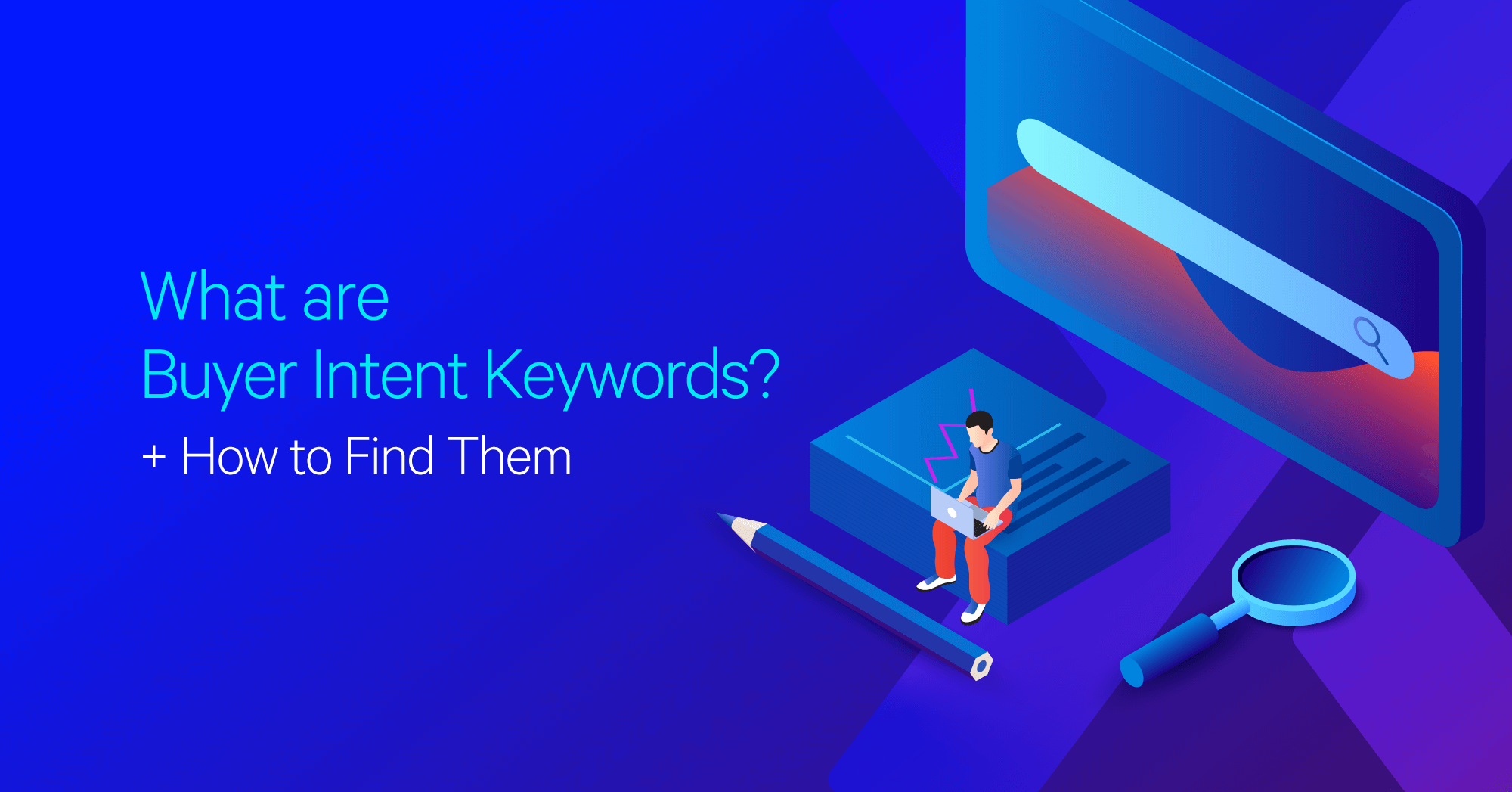
Hand off the toughest tasks in SEO, PPC, and content without compromising quality
Explore ServicesRegardless of your business, you want people with commercial intent to land on your website.
Buyer intent keywords can be some of the most (financially) lucrative keywords you can target.
If you can target them effectively, you’ll be advertising directly to people who are closest to making a purchase.
In this guide, you’re going to learn what buyer intent keywords are, and see examples of some of the forms they take. Then, we’ll introduce you to some of the most effective ways to research them for any niche.
To start, let’s look at what it really means for keywords to have buyer intent.
What are buyer intent keywords?
Buyer intent keywords refer to the search queries that are used in the final stage of the buying process.
It’s important to understand what the buying process means too, so let’s look at an example.
The buying process:
Most people follow a path before they buy a product. They start by experiencing a problem that brings them frustration. After enough frustrations, they explore the options, compare solutions, and then finally make a purchase.
If you were on the path to buying a new TV, your searches over several weeks might look like this.

The point of researching buyer-intent keywords is to try to focus your advertising only on people who have reached the last stage.
Why target people in the final stage? Because these searchers are the most likely to convert.
You’re jumping the line in front of all the other advertisers who have helped the customer get this far. If you can successfully target them, your campaigns will be more efficient and profitable.
Now that you know what these keywords are and why they matter, you’re ready to learn how to identify the ones that will point you to eager customers.
4 Different types of buyer intent keywords
Buyer intent keywords can take many different forms depending on your niche.
Most will take one of these four forms:
1) [Buy] Keywords
“[Buy] + [product]” is one of the easiest queries to recognize as having buyer intent. Most people who use the word “buy” in a search are getting close to making a purchase.
Let’s look at how Google responds when you use this type of search.
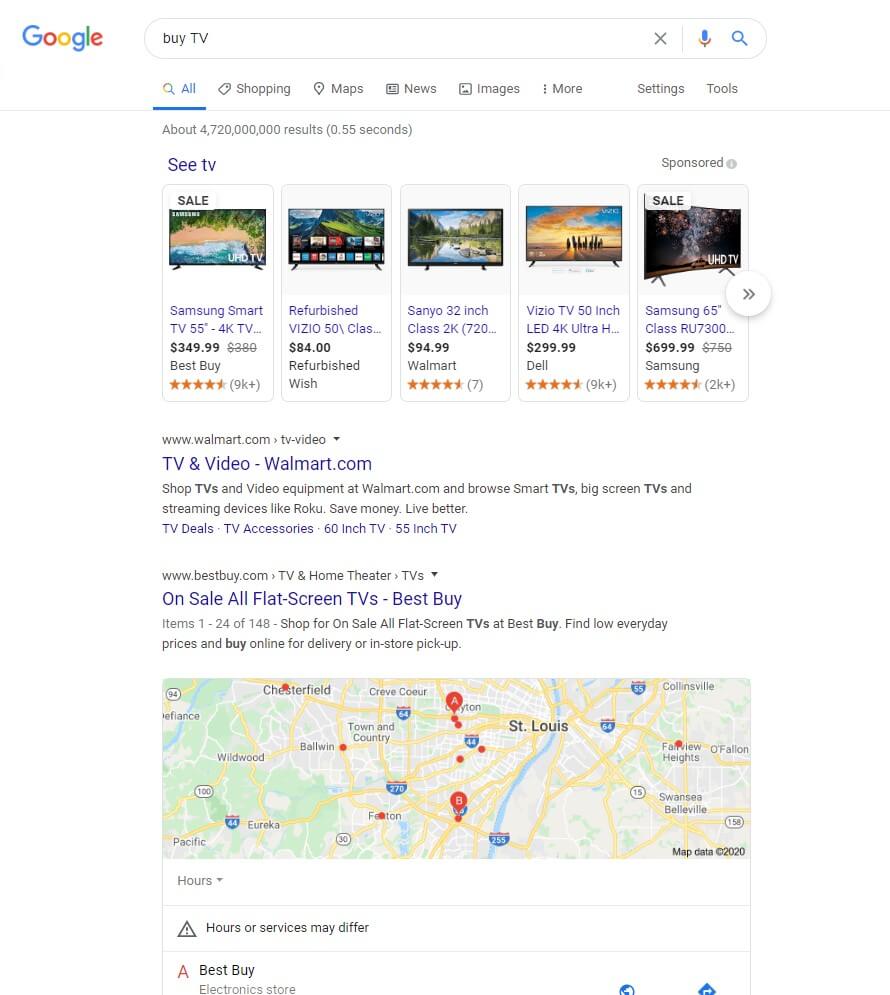
Starting from the top, Google showcases several different models at different price points.
The ads and top links on the page all point to major national retailers who sell TVs. Everything on this page is only a few clicks from a checkout button.
2) [Product] Keywords
Queries that start with product names can point you to effective buyer intent keywords. Someone may be close to making a purchase when they are searching:
- [Product] + [top 10]
- [Product] + [best in 2020]
- [Product] + [price range]
Searchers who are using these queries are often trying to narrow down their choices from two or three to a single one. When they arrive at that one, they are likely to buy right after.
Let’s look at how Google responds to this search:
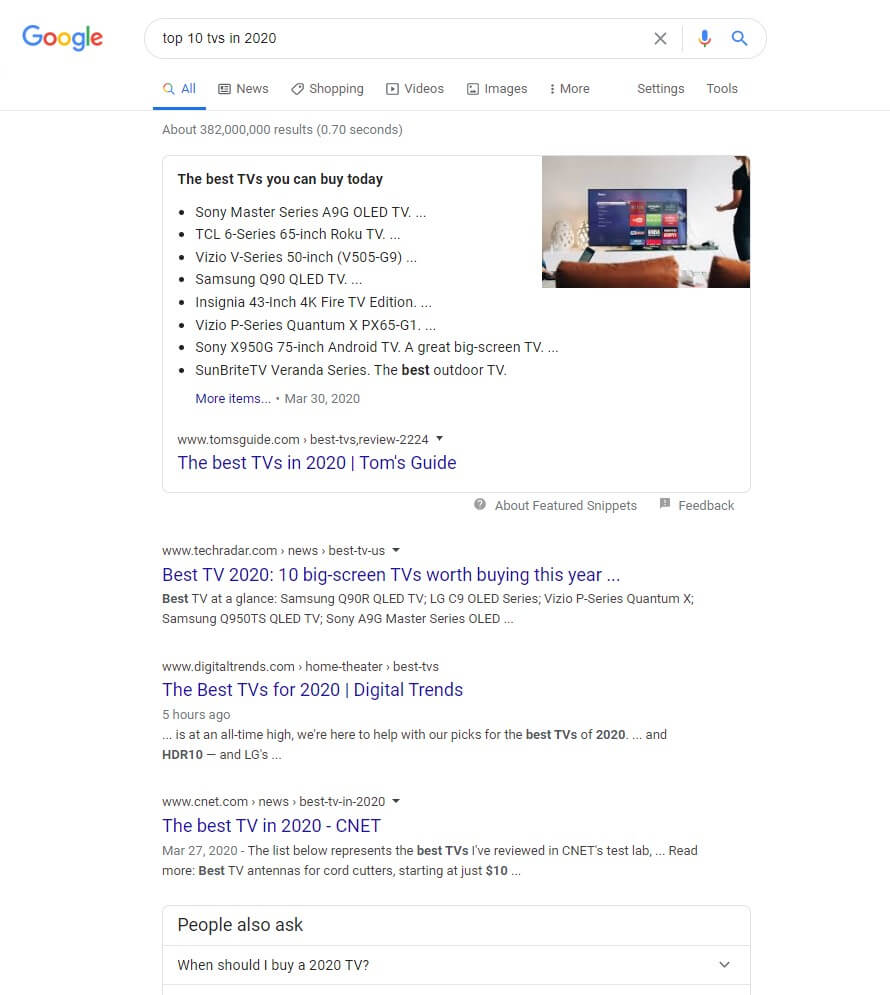
You’ll notice that this is a very different set of results.
For one, there isn’t a price listed anywhere. The top organic results also point to guides rather than marketplaces.
Don’t let that fool you into thinking these buyers aren’t serious. They are just behaving like informed buyers.
3) [Informational] Keywords
Informational keywords can signal buyer intent, but they are more subtle.
In most cases, someone who does an informational search is in the early stages of the buying process at best. However, when the search is about resolving doubts or roadblocks, they can have buyer intent.
They are more likely to have buyer intent when they involve direct brands or models.
Here are some examples of informational searches that may point to buyer intent:
- [Product] + [specific features]
- [Product] + [performance specs]
- [Product] + [bluetooth compatibility]
Let’s look at how Google interprets that last one.
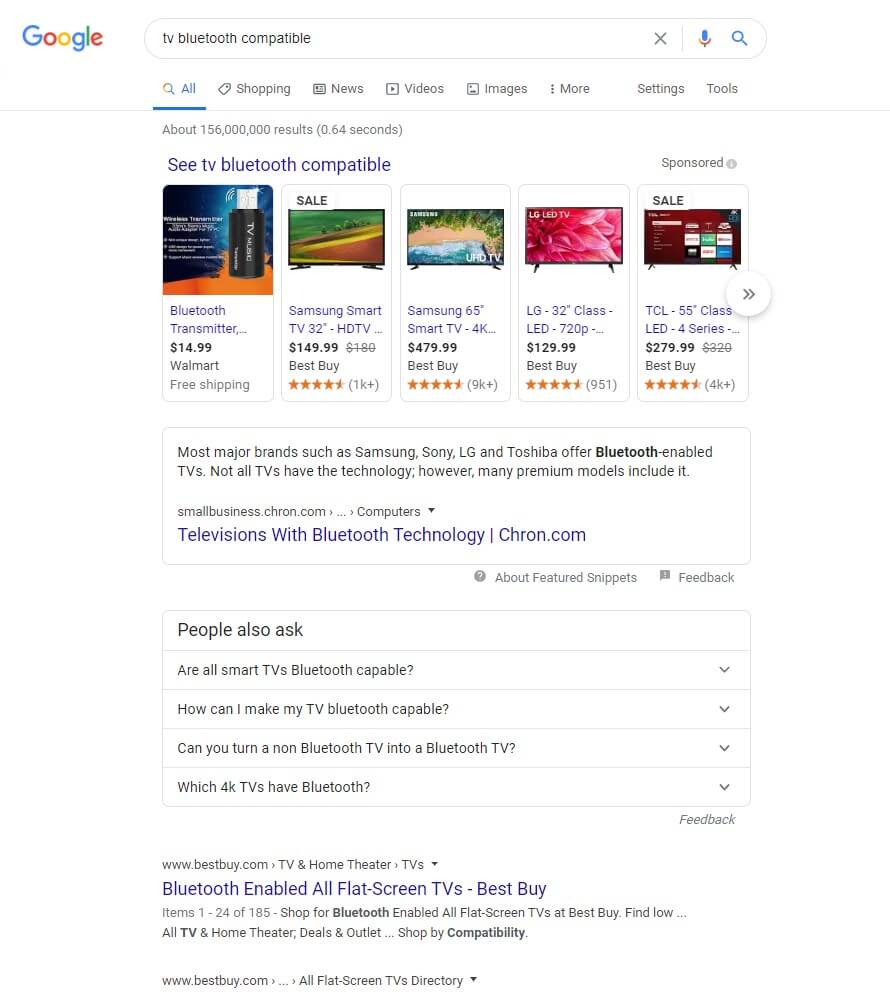
As you can see, this results page is very purchase-oriented even though the query itself is informational.
4) [Free] Keywords (or Low Purchase Intent)
A certain volume of searchers want solutions, but they aren’t willing to buy. They typically create queries like:
- Free alternatives to [product]
- Best free [product]
For many businesses, these keywords are not worth targeting.
However, businesses that survive off of free signups and ad-supported apps can benefit from them.
TVs aren’t going to work as an example this time, so let’s look at a related example: TV streaming services.
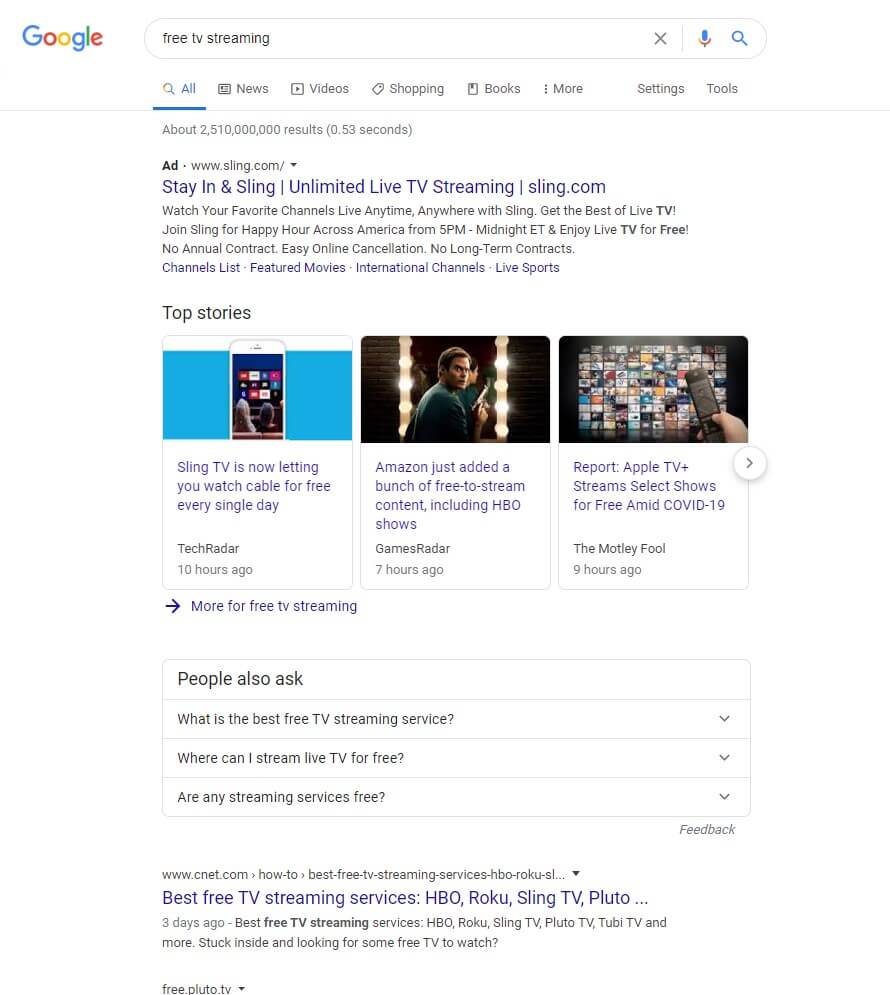
As you can see, for “free” searches, there’s a mix of ads, news, and QAs. This suggests these queries aren’t seen as having the same level of intent as others.
Now that you can recognize these types of keywords, let’s look at how you find them.
How do you find buyer keywords?
You can find buyer keywords from a lot of different sources. In this section, you’re going to learn how to use all the following sources for enhanced research:
- Keyword research tools
- Customer surveys
- Keyword Insights
Uncover new keywords 🔑
Give us some topics/seed keywords and we’ll research these queries, along with related terms, search intent and topic grouping. Then we’ll compile into an actionable keyword report.
A simple Google search can tell you a lot about how much commercial intent is in a set of keywords. One of the biggest clues that point to high buyer intent is a significant number of ads on the page.
Here’s an example of a TV-related search that pulls up multiple ads before any organic results or other SERP features.

Run as many searches as you need to understand how different keywords in your niche perform.
Let’s look at how you can use keyword research tools to make your search easier.
Keyword Research Tools
Several keyword research tools are available online that can help you better identify and make use of keywords with buyer intent.
Some tools, such as Ahrefs, include intent-related features as part of their keyword tool.
For example, Ahrefs has filters that you can use to narrow down keywords with buyer intent. You can also use filters to cut down on keyword results that use “free” or informational terms.
Another way that you can take advantage of keyword research tools is by using their Cost-per-click tracking features. Ahrefs, Moz, and SEMrush are all tools that track CPC data.
In this sample Ahrefs search, you can see CPC columns on the right-hand side.
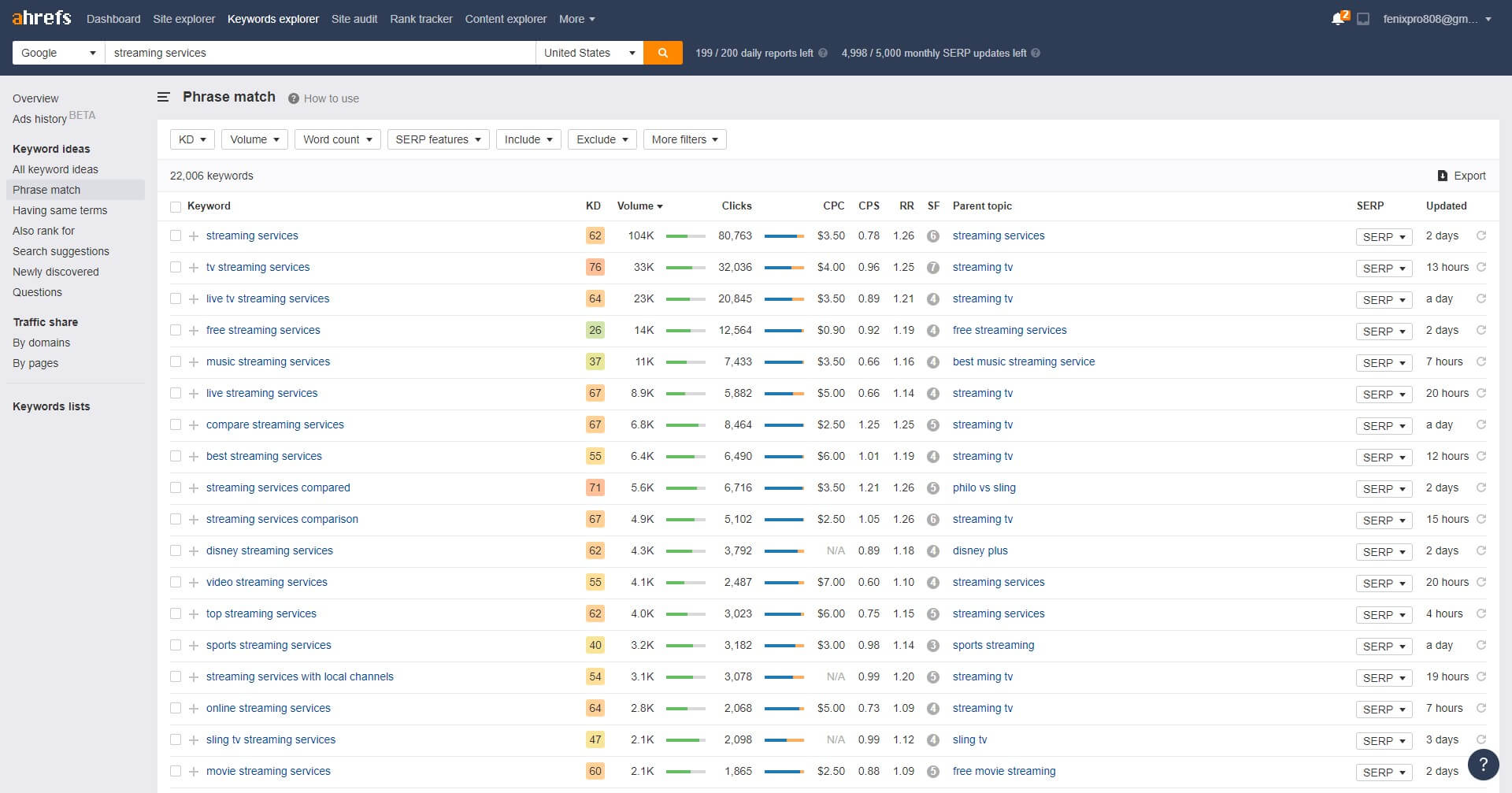
A high cost-per-click can point you toward some of the most intentional keywords. A high cost means that a lot of people are competing over those keywords because they have a history of performing well.
Customer Surveys
Customer surveys are a more proactive way of capturing buyer intent.
When you extensively survey customers about the things that frustrate them, you can reverse-engineer the phrases they use the most into keywords.
You can also find buyer keywords by going to the places where your customers like to congregate and discuss products. Depending on your niche, they may be hanging out in enthusiast forums, or on social media pages.
Don’t forget to take advantage of major Q&A sites like Quora. The discussions people have here about different products or their features can give you a lot of opportunities to find keywords.
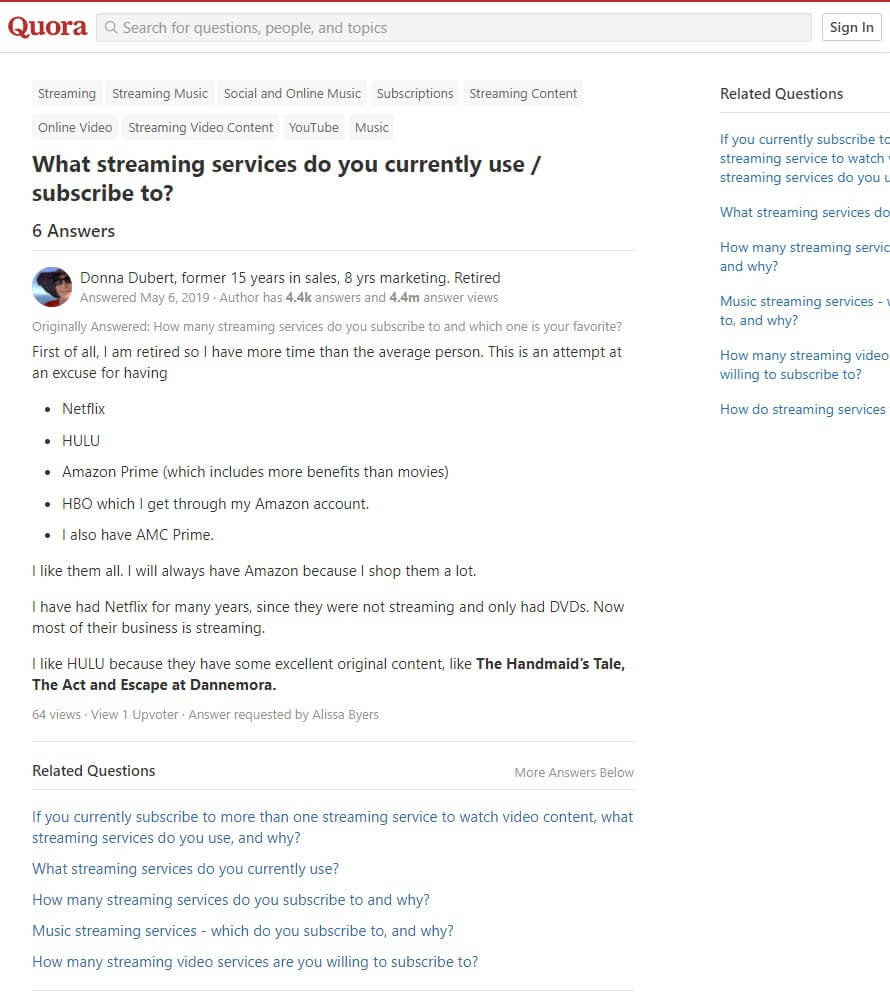
Keyword Insights
Keyword Insights is an AI-powered tool for keyword clustering and intent at scale.
The most innovative and most cost-effective way to group keywords and establish search intent at scale. The tool uses a machine learning model trained on millions of SERP data and manual labelling. It can accurately identify the intent of a given keyword.
The output will tell you which keywords you can target a single page with or which need to be broken into multiple pages. It’ll also show you where you need to create articles vs product pages to rank for any given keyword.
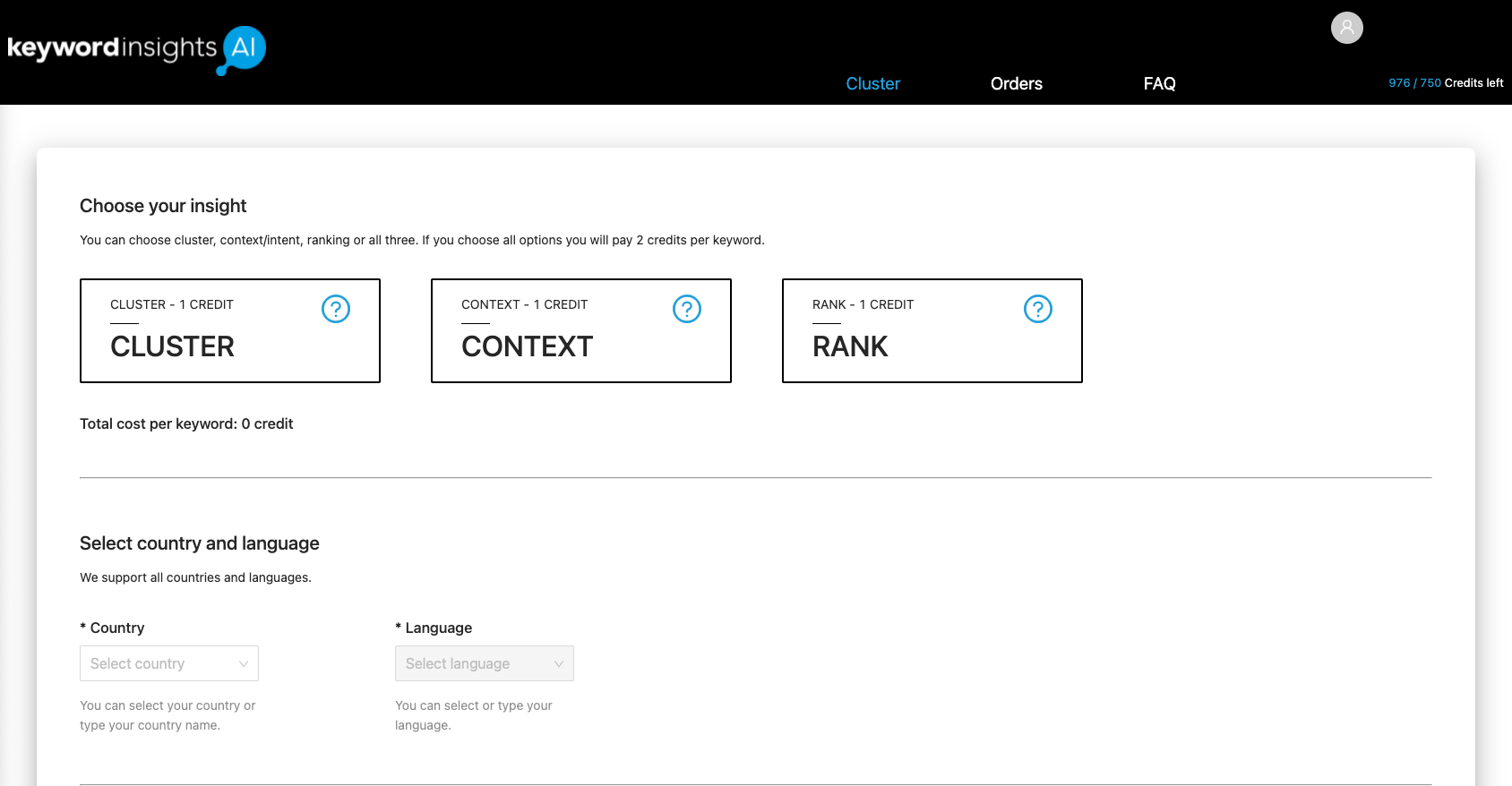
The tool will provide the true search intent behind each keyword with our keyword context report. There will be 3 simple columns that tell users how many of the top 10 results are articles, how many are transactional pages and how many are “other” type pages (job pages, cookie policies, home pages etc.).
Here is an example report:
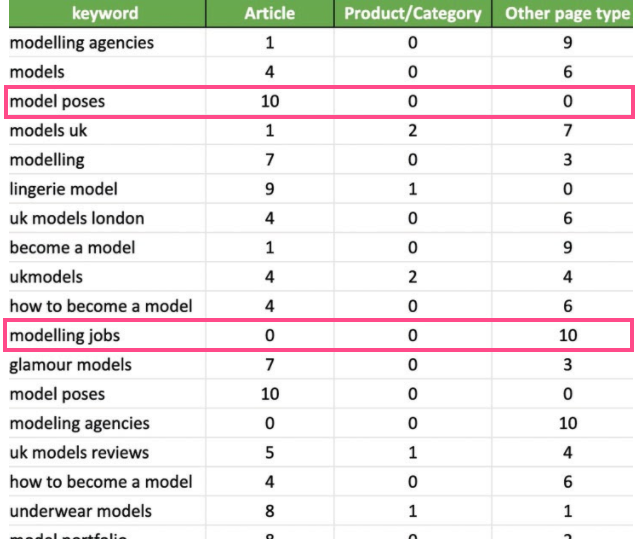
As you can see for the keyword “modelling jobs”, Keyword insights detects that Google is showing 10 other pages (Mostly job-related pages) on the first page, with zero product/transactional pages and articles. It means you will never rank here with a blog post.
In contrast, take a look at the keyword “model poses” and you can see that Google is ranking entirely articles here. When you think about the intent behind these two search terms, this makes sense:
- Looking for a job? 👉 You probably want to see a list of available jobs not a blog post.
- Looking to learn more about model poses? 👉 You probably want to check out an informational resource.
Seize the power of buyer intent
Now you understand what buyer intent is, how to identify keywords that have buyer intent, and how to use some of the most popular tools to research these keywords more effectively.
You can use these new skills to find terms being used by people who are ready to buy.
Hand off the toughest tasks in SEO, PPC, and content without compromising quality
Explore ServicesWritten by Adam Steele on April 28, 2020
COO and Product Director at Loganix. Recovering SEO, now focused on the understanding how Loganix can make the work-lives of SEO and agency folks more enjoyable, and profitable. Writing from beautiful Vancouver, British Columbia.





